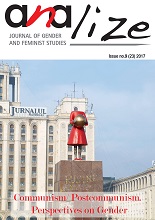Princess Bodies, Commodities for the Wicked. A Marxist Reading of Disney's Animated Films The Little Mermaid (1989) and Tangled (2010)
Princess Bodies, Commodities for the Wicked. A Marxist Reading of Disney's Animated Films The Little Mermaid (1989) and Tangled (2010)
Author(s): Ana-Maria Niculescu-MizilSubject(s): Gender Studies, Media studies, Sociology of Culture
Published by: Societatea de Analize Feministe AnA
Keywords: commodification; Disney princess; sociology of the body; gender roles; young femininity versus elderly femininity;
Summary/Abstract: Theoretical effervescence regarding on the one hand the social phenomena of body commodification as discussed in the context of organ transplant and commercial surrogacy industries and on the other hand Disney's princess culture and its making of the female body image entitle a Marxist reading of Disney's animated films The Little Mermaid (1989) and Tangled (2010). The present research relies on Marx's (1867; 2010) understanding of commodity as presented in 'Section 4: The Fetishism of Commodities and the Secret Thereof' of his famous work 'Capital. A Critique of Political Economy', van Niekerk, Anton and Liezl van Zyl's (1995) on the ethics of commercial surrogacy, Scheper-Hughes's (2002) work on commodity fetishism and organ traffic to determine whether one can talk about commodification of the body or of body features in the case of the two Disney princesses, Ariel and Rapunzel. Due to the exploratory nature of the inquiry connecting the theoretical dots between Disney's princesses and body commodification, it cannot hope for closure, but only for leaving an alluring trail of breadcrumbs, as in Hansel and Gretel's story, to be picked up by the next research(er).
Journal: AnALize: Revista de studii feministe
- Issue Year: 2017
- Issue No: 9 (23)
- Page Range: 129-147
- Page Count: 19
- Language: English

